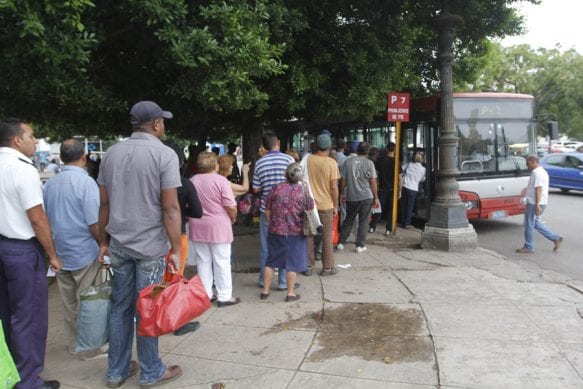Cuba is Definitely a Highly Urban Country
The global population trend of concentrating in cities can also be seen on this Caribbean island.

HAVANA TIMES – Over the last century, Cubans have displayed a clear tendency to concentrate in urban areas, especially in a few cities. Since 1907 up until the present day, the number of urban centers with over 1000 inhabitants shot up from 127 to 895 in Cuba.
However, it was in the 1970s that the greatest number of Cubans concentrated in these kinds of cities was recorded (72.1%), and this number has slowly been dropping ever since.
At least this is the data the Concentrated Human Settlements with 1000+ inhabitants: a century of evolution report has compiled together, written by the National Office of Statistics and Information (ONEI) and based on nine population censuses carried out between 1907 and 2012.
According to the latest Population and Housing Census (2012), the Cuban population has grown to 11,167,325 inhabitants, up from 2,049.000 recorded in 1907.
Over this same period, the number of Cubans living in settlements with 1000+ inhabitants grew to 8,197,846, that is to say by 9.8 times.
In general terms, the level of urbanization of the population went from 43.9% (1907) to 76.8% (2012).
Seven years ago, 2,106,146 people lived in Havana alone, approximately 19% of the total Cuban population.
The process of population concentration in urban areas in Cuba began with Spanish colonization, during the second decade of the 16th century, when the first towns were founded and residents from the metropolis came to settle down and a large number of stores and industries flourished, as did the black market, the text reminds us.
The independence wars (1868-1898) and the policy of forced population reconcentration in cities (1896-1897), transformed the largest cities, and especially the capital, into attractive centers for Cuban citizens. In 1907, 37.2% of the country’s urban population were living in Havana, the text outlines.
During the 20th century, the process of population concentration and urbanization became a lot more intense. In 1953, almost 45% of the urban population was living in settlements with over 50,000 inhabitants.
According to the report, the number of people living in towns has grown since the 1980s and there has been a slight drop in the number of residents in cities, a trend that continues even today.
It explains that these changes are essentially the result of the 1976 Political Administration Division, which sought to make different regions of the country stronger, by extending infrastructure and services, which meant a higher quality of life in these regions, the government states.
It also adds that this resulted in national migration, which used to be to the six old provincial capitals, to now be redirected to the interior cities and towns of the 14 new provinces (which are now 15 as of 2010 because of a reform).
The above is confirmed by the 2002 Census, which reveals that human settlements of 50,000-499,999 inhabitants increased among the urban population, as a result of the provincial capitals being consolidated.
This phenomenon has also appeared in some municipalities such as Moa (Holguin) and Moron (Ciego de Avila), which had made quite a bit of progress and were developed before 1976, the former closely linked to the nickel industry and the latter as a tourist destination, the report states.






Spain was a colonizer what good did they do… Rape steal and plunder like every other European nation…
Interesting parallels between the Cuban urbanization and the same in the deep south of the US being caused by agricultural mechanization. The adoption of the automated cotton picker in the US deep south and the sugar cane harvesting equipment in Cuba both did away with the need for unskilled agricultural labor. Both diminished the respective countries advantage in two different marketplaces. Both caused those unskilled workers to move from their rural environments to urban in search of employment and relative economic security. And both caused a shift in the geographic areas that became the keystone of musical development, Chicago for Mississippi farm workers with blues music and Santiago, later Havana, for Cuban trova.
Are kids still taught to hate Spain? , Like Spain never did anything good.
I believe that the nationalization of the farms and the dismantling of the Cuban Sugar industry contributed significantly to the departure from the countryside of the youngsters and to the concentration of the population in urban areas. There were no incentives for them to stay in the farms or around the dismantled ingenios and once they left there were no incentives for them to go back.